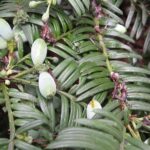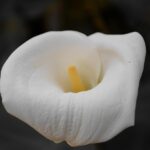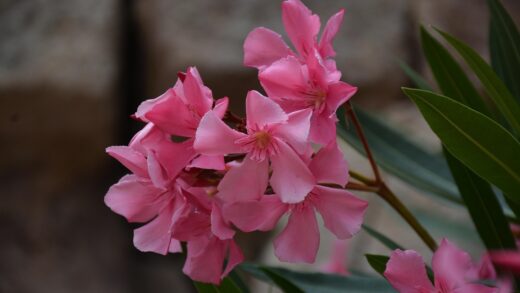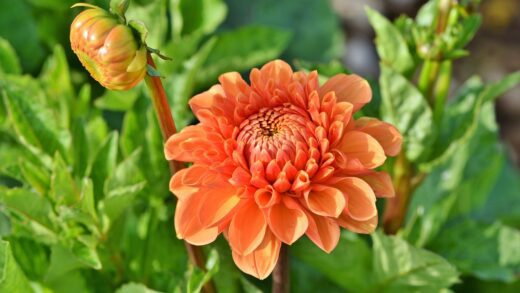The practice of pruning, or cutting back, is the most significant annual maintenance task required for keeping blue oat grass looking its best. As a semi-evergreen, cool-season grass, its foliage can become tired and weathered over the winter, and an annual “haircut” is essential for rejuvenating the plant and encouraging a flush of fresh, vibrant new growth. This process removes the old, straw-colored leaves from the previous season, ensuring that the new silvery-blue blades can emerge unimpeded, resulting in a clean, dense, and perfectly formed clump. Proper timing and technique are crucial to ensure this task invigorates the plant rather than causing it harm.
The fundamental purpose of cutting back ornamental grasses like blue oat grass is both aesthetic and horticultural. Aesthetically, it removes the winter-worn foliage, which can look untidy, and restores the plant to a pristine state for the coming growing season. Horticulturally, this cleanup improves air circulation within the crown of the plant, which helps to reduce the likelihood of fungal diseases taking hold. It also allows more sunlight to reach the crown, which stimulates the dormant growth buds and encourages a more vigorous and uniform flush of new growth.
Unlike some perennials that can be cut back in the autumn, it is strongly recommended to leave the foliage of blue oat grass standing through the winter. The dormant leaves provide crucial insulation for the plant’s crown, protecting it from the worst of the winter cold and wind. The standing foliage also adds valuable texture and structure to the winter garden, catching frost and snow in a visually pleasing way. The annual cutback should therefore be delayed until the tail end of winter or the very beginning of spring.
Executing the prune is a simple task that requires just a few basic tools. A sharp pair of hand shears, hedge trimmers, or even a powered hedge trimmer for very large clumps will make the job quick and easy. The goal is to cut the entire clump of foliage back uniformly, creating a low, tidy dome. This single act of maintenance does more than anything else to ensure your blue oat grass remains a beautiful and healthy feature in your garden for many years.
The ideal timing for pruning
The timing of the annual cutback is the most critical factor for success. Pruning at the wrong time of year can stress the plant or damage the emerging new growth. The ideal window for this task is in the late winter or very early spring. At this point, the plant is still largely dormant, but the new growth for the coming season is just beginning to stir at the base. Performing the prune during this period allows you to remove the old foliage without harming the new shoots.
More articles on this topic
A good visual cue to look for is the first sign of new green or blue shoots emerging from the crown at the base of the plant. When you see these tiny new blades, it is the perfect time to act. If you prune too early in the winter, you risk exposing the crown to potential damage from a late cold snap. If you wait too long and the new growth has already grown several inches, it becomes very difficult to cut back the old foliage without snipping the tops off the new leaves, which can result in an untidy appearance for the rest of the season.
The specific timing will vary depending on your climate. In warmer regions, this window might open as early as late January or February. In colder northern climates, you may need to wait until March or even early April. The key is not to follow a strict calendar date, but rather to observe the plant and the local weather conditions. Waiting until the threat of prolonged, severe freezing weather has passed is a safe approach.
Once you perform the cutback, the removal of the old foliage allows sunlight and warmth to penetrate to the crown of the plant more effectively. This acts as a signal to the plant to ramp up its growth for the new season. You will typically see a rapid and vigorous flush of new growth in the weeks following the prune, quickly forming the beautiful mounded shape that the grass is known for.
Techniques for cutting back
There are two primary techniques for the annual cleanup of blue oat grass: a hard prune, which involves cutting the entire clump back, and a more gentle “combing” or “raking” to remove only the dead leaves. The method you choose will depend on your climate and the condition of the plant after the winter. Both methods are effective when applied in the right circumstances.
More articles on this topic
The hard prune is the most common and effective method, especially in colder climates where the majority of the foliage has been bleached and damaged by winter weather. To perform a hard prune, take a sharp pair of shears or a hedge trimmer and cut the entire clump of foliage back to a uniform height of about 8 to 10 centimeters. This creates a neat, low dome. For larger clumps, it can be helpful to tie a piece of twine or a bungee cord around the clump before cutting to bundle the foliage together, which makes cleanup much easier.
After cutting, simply remove the bundle of old foliage to the compost pile. This technique ensures that all the dead and potentially diseased material from the previous year is removed, providing a clean slate for the new season’s growth. The result is a perfectly uniform and vigorous new clump. While it may look stark immediately after pruning, the plant will fill in with surprising speed as spring progresses.
The second technique, combing, is better suited for warmer climates where the grass remains largely evergreen and has sustained only minor winter damage. In this case, a full cutback is unnecessary and could remove healthy foliage. Instead, put on a pair of sturdy gardening gloves and simply run your fingers through the clump of grass, from the base upwards. The dead, brown leaves will come away easily, while the healthy, well-anchored foliage will remain, leaving the plant looking refreshed and tidy. A small, flexible rake can also be used for this purpose.
Tidying up versus rejuvenation pruning
The choice between a light tidying up and a full rejuvenation prune is a judgment call based on the plant’s appearance in late winter. A “tidying up” prune, which is essentially the combing method, is appropriate when the plant has come through the winter looking largely intact and healthy. If more than half of the foliage is still blue and vibrant, a gentle cleanup is all that is needed to remove the minority of dead leaves and maintain the plant’s good looks. This approach preserves the existing healthy foliage while still making way for new growth.
A rejuvenation prune, or a hard cutback, is necessary when the plant looks significantly weathered and the majority of its foliage is brown and straw-like. This is the typical scenario in colder climates (USDA zones 6 and below). In this situation, simply combing out the dead leaves would be a tedious and ineffective task. A hard prune is a much more efficient and effective way to reset the plant for the new season, ensuring that all the emerging growth is fresh, strong, and uniformly colored.
A rejuvenation prune can also be used to address other issues. For example, if a plant has been affected by a fungal disease like rust during the previous season, a hard prune is an excellent way to remove all the infected plant material and reduce the chance of the disease recurring. It can also be used to correct a floppy or open habit that may have developed, as the new growth that emerges will typically be stronger and more upright.
It is also important to note that even in warmer climates, older clumps of blue oat grass may benefit from a hard rejuvenation prune every few years. Over time, the buildup of old, dead foliage at the base of the plant can begin to inhibit new growth and reduce air circulation. An occasional hard prune, even on an evergreen-looking plant, can help to decongest the crown and stimulate renewed vigor.
Post-pruning care for vigorous regrowth
After you have completed the annual prune, a few simple care steps can help to ensure the plant gets off to the best possible start for the new season. The first task is to thoroughly clean up the area around the base of the plant. Rake away all the clippings and any other accumulated winter debris, such as fallen leaves. This cleanup improves the appearance of the garden bed and, more importantly, removes any material that could harbor pests or disease pathogens.
With the area around the crown now clear and exposed, it is a good time to inspect the health of the plant’s base. The crown should be firm to the touch. If you notice any soft or mushy areas, it could be a sign of rot, which would indicate a problem with soil drainage that needs to be addressed. This post-pruning inspection provides a clear view of the plant’s foundation.
This is also the only time of year when a very light application of fertilizer should be considered, and only if the plant is in exceptionally poor soil. If needed, a light top-dressing of compost or a small amount of a balanced, slow-release granular fertilizer can be applied around the base of the plant. This will provide a gentle boost of nutrients to support the flush of new growth. However, for most plants in average soil, this step is entirely unnecessary.
Once the cleanup is complete, all that is left to do is to wait for nature to take its course. As the soil continues to warm, the newly pruned plant will respond with a surge of vigorous growth. Ensure the plant receives adequate moisture if the spring is particularly dry, but avoid overwatering. Within a few short weeks, your blue oat grass will have transformed from a low, pruned dome into a beautiful, fresh mound of silvery-blue foliage.
📷: Drew Avery, CC BY 2.0, via Wikimedia Commons

















